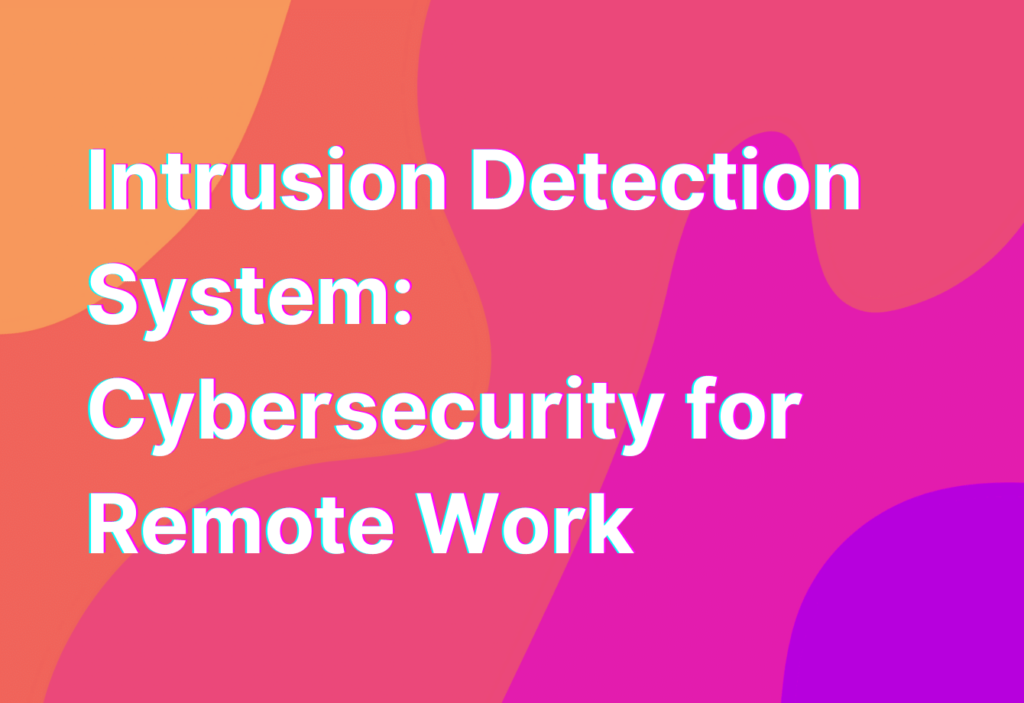Intrusion Detection System: Cybersecurity for Remote Work
Hey there, remote workers! It’s Ashley, your friendly remote work advocate, here to talk about an important topic: cybersecurity. As we all know, working remotely comes with its own set of challenges, and one of the biggest challenges is keeping our data and information secure. That’s where intrusion detection systems come in. In this article, we’ll dive into what an intrusion detection system is, how it works, and why it’s crucial for remote work. So, grab your favorite cup of coffee and let’s get started!
What is an Intrusion Detection System?
Before we get into the nitty-gritty details, let’s start with the basics. An intrusion detection system (IDS) is a cybersecurity tool that monitors network traffic and detects any unauthorized or malicious activity. It acts as a virtual security guard, constantly keeping an eye on your network and alerting you when something suspicious is happening.
Think of it as your very own cybersecurity superhero, protecting your data from cybercriminals and hackers. With the rise of remote work, the need for robust cybersecurity measures has become more important than ever. An IDS is a crucial component of any remote worker’s cybersecurity arsenal.
How Does an Intrusion Detection System Work?
Now that we know what an IDS is, let’s take a closer look at how it actually works. There are two main types of IDS: network-based IDS (NIDS) and host-based IDS (HIDS).
A network-based IDS monitors network traffic in real-time, analyzing packets of data to identify any suspicious patterns or anomalies. It can detect various types of attacks, such as port scanning, denial-of-service (DoS) attacks, and even attempts to exploit vulnerabilities in your network.
On the other hand, a host-based IDS focuses on individual devices or hosts within your network. It monitors the activities happening on a specific device, such as log files, system calls, and file integrity checks. This type of IDS is particularly useful for detecting insider threats or unauthorized access to sensitive information.
Both NIDS and HIDS work together to provide comprehensive protection for your remote work setup. They analyze network traffic and device activities, comparing them against known attack signatures and behavioral patterns. When an IDS detects something suspicious, it generates an alert, allowing you to take immediate action and prevent any potential security breaches.
Why is an Intrusion Detection System Crucial for Remote Work?
Now that we understand how an IDS works, let’s talk about why it’s so important for remote work. When you’re working remotely, you’re often accessing sensitive company data and resources from outside the traditional office environment. This opens up new avenues for cybercriminals to exploit.
With an IDS in place, you can rest easy knowing that your network is being monitored 24/7. It acts as a virtual security guard, constantly on the lookout for any suspicious activity. Whether you’re connecting to your company’s VPN or accessing cloud-based services, an IDS will keep a close eye on your network traffic and alert you to any potential threats.
Not only does an IDS help protect your data and information, but it also helps maintain the integrity and availability of your network. By detecting and preventing attacks, it ensures that your remote work setup remains secure and uninterrupted.
Wrapping Up
And there you have it, folks! We’ve covered the basics of intrusion detection systems and why they’re crucial for remote work. With the rise of remote work, it’s more important than ever to prioritize cybersecurity and protect our data from cyber threats.
If you want to learn more about cybersecurity for remote work, be sure to check out our article on Key Exchange: Cybersecurity for Remote Work. It’s packed with valuable information and tips to help you stay safe and secure in your remote work journey.
Stay safe, stay secure, and keep rocking that remote work life!


